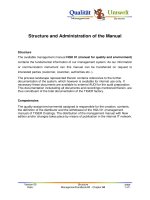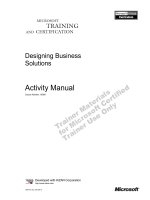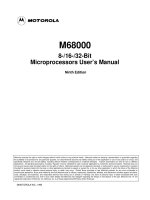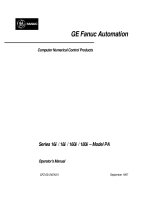Gas Dehydration Field Manual docx
Bạn đang xem bản rút gọn của tài liệu. Xem và tải ngay bản đầy đủ của tài liệu tại đây (9.27 MB, 260 trang )
Gas Dehydration Field Manual
Gas Dehydration Field
Manual
Maurice Stewart
Ken Arnold
AMSTERDAM • BOSTON • HEIDELBERG • LONDON • NEW YORK • OXFORD
PARIS • SAN DIEGO • SAN FRANCISCO • SINGAPORE • SYDNEY • TOKYO
Gulf Professional Publishin
g
is an imprint of Elsevier
Gulf Professional Publishing is an imprint of Elsevier
225 Wyman Street, Waltham, MA 02451, USA
The Boulevard, Langford Lane, Kidlington, Oxford, OX5 1GB, UK
„ 2011 Elsevier Inc. All rights reserved.
No part of this publication may be reproduced or transmitted in any form or
by any means, electronic or mechanical, including photocopying, recording,
or any information storage and retrieval system, without permission in writing
from the publisher. Details on how to seek permission, further information
about the Publisher’s permissions policies and our arrangements with
organizations such as the Copyright Clearance Center and the Copyright
LicensingAgency,canbefoundatourwebsite:www.elsevier.com/permissions.
This book and the individual contributions contained in it are protected
under copyright by the Publisher (other than as may be noted herein).
Notices
Knowledge and best practice in this field are constantly changing. As new
research and experience broaden our understanding, changes in research
methods, professional practices, or medical treatment may become
necessary.
Practitioners and researchers must always rely on their own experience
and knowledge in evaluating and using any information, methods,
compounds, or experiments described herein. In using such information or
methods they should be mindful of their own safety and the safety of others,
including parties for whom they have a professional responsibility.
To the fullest extent of the law, neither the Publisher nor the authors,
contributors, or editors, assume any liability for any injury and/or damage
to persons or property as a matter of products liability, negligence or
otherwise, or from any use or operation of any methods, products,
instructions, or ideas contained in the material herein.
Library of Congress Cataloging-in-Publication Data
Application Submitted.
British Library Cataloguing-in-Publication Data
A catalogue record for this book is available from the British Library.
ISBN: 978-1-85617-980-5
For information on all Gulf Professional Publishing
publications visit our Web site at www.elsevierdirect.com
111213 10987654321
Printed and bound in the USA
Part 1
Hydrate Prediction
and Prevention
Contents
OBJECTIVES 1-1
OVERVIEW 1-2
WATER CONTENT OF GAS 1-3
GAS HYDRATES 1-12
PREDICTION OF OPERATING TEMPERATURE AND PRESSURE 1-13
TEMPERATURE DROP DETERMINATION 1-15
HYDRATE PREDICTION CORRELATIONS 1-19
HYDRATE PREVENTION 1-25
HYDRATE INHIBITION 1-45
EXERCISES 1-52
OBJECTIVES
To prepare natural gas for sale, its undesirable components
(water, H
2
S and CO
2
) must be removed.
Most natural gas contains substantial amounts of water vapor
due to the presence of connate water in the reservoir rock.
At reservoir pressure and temperature, gas is saturated with
water vapor.
Removal of this water is necessary for sales specifications or
cryogenic gas processing.
Primary concerns in surface facilities are determining the:
Water content of the gas
Conditions under which hydrates will form
Liquid water can form hydrates, which are ice-like solids, that
can plug flow or decrease throughput.
Predicting the operating temperatures and pressures at which
hydrate form and methods of hydrate prevention are
discussed in this section.
DOI: 10.1016/B978-1-85617-980-5.00001-X
1
Hydrate Prediction and Prevention 1
OVERVIEW
Dew Point
The dew point is the temperature and pressure at
which the first drop of water vapor condenses into
a liquid.
It is used as a means of measuring the water vapor
content of natural gas.
As water vapor is removed from the gas stream, the dew
point decreases.
Keeping the gas stream above the dew point will prevent
hydrates from forming and prevent corrosion from
occurring.
Dew Point Depression
Dew point depression is the difference between the
original dew point and the dew point achieved after
some of the water vapor is removed.
It is used to describe the amount of water needed to be
removed from the natural gas to establish a specific
water vapor content.
Why Dehydrate?
Dehydration refers to removing water vapor from a gas
to lower the stream’s dew point.
If water vapor is allowed to remain in the natural gas,
it will:
Reduce the efficiency and capacity of a
pipeline
Cause corrosion that will eat holes in the pipe
or vessels through which the gas passes
Form hydrates or ice blocks in pipes, valves,
or vessels
Dehydration is required to meet gas sales contracts
(dependent upon ambient temperatures). Some
examples include:
Southern U.S.A., Southeast Asia, southern Europe,
West Africa, Australia 7 lb/MMSCFD
Northern U.S.A., Canada, northern Europe,
2 Gas Dehydration Field Manual
northern and central Asia 2–4 lb/MMSCFD
Cryogenic (turbo expander plants) 0.05 lb/MMSCFD
Solid bed adsorption units are used where very low dew
points are required.
WATER CONTENT OF GAS
Introduction
Liquid water is removed by gas-liquid and liquid-liquid
separation.
The capacity of a gas stream to hold water vapor is:
A function of the gas composition
Affected by the pressure and temperature
of the gas
Reduced as the gas stream is compressed
or cooled
When a gas has absorbed the limit of its water
holding capacity for a specific pressure and temperature,
it is said to be saturated or at its dew point.
Any additional water added at the saturation
point will not vaporize, but will fall out as free
liquid.
If the pressure is increased and/or the temperature
decreased, the capacity of the gas to hold water will
decrease, and some of the water vapor will condense
and drop out.
Methods of determining the water content of gas
include:
Partial pressure and partial fugacity relationships
Empirical plots of water content versus P and T
Corrections to the empirical plots above for the presence
of contaminants such as hydrogen sulfide, carbon
dioxide and nitrogen and Pressure Volume Temperature
(PVT) equations of state.
Partial Pressure and Fugacity
Applying Raoult’s law of partial pressures to water, we
have
y
w
¼ P
v
x ð1-1Þ
Hydrate Prediction and Prevention 3
1
Where:
y
w
¼ Mol fraction of water in the vapor phase
P
v
¼ Vapor pressure of water at system
temperature
x
w
¼ Mol fraction of water in the liquid water phase
¼ 1.0
Liquid mol fraction can be taken as unity because of the
immiscibility of the liquid phases.
Therefore, for a known pressure and water vapor
pressure the mol fraction water in the vapor phase can be
determined from Equation 1-1.
Application of Equation 1-1
Valid only at low pressure where the ideal gas law
is
valid
Recommended for system pressures up to 60 psia
(4 barg)
Empirical Plots
Empirical plots are based on lean, sweet natural gas.
The log of water content (w) is plotted versus P and T.
Plots approximate a straight line at a given pressure.
The water content shown is the maximum that gas can
hold at the P and T shown.
It is fully saturated, that is, relative humidity is 100%.
The temperature is the water dew point temperature of
the gas at the concentration and pressure shown.
Numerous correlations are available to determine the
water content of a natural gas stream.
McKetta and Wehe correlation provides
satisfactory results for most applications when
used to determine the water content of a sweet
natural gas stream that contains over 70%
methane (Figure 1-1).
The accuracy is Æ 5%
(probably more accurate than
the data the correlation is being applied toward).
As H
2
S and CO
2
content increases the accuracy
decreases. It is good practice to make corrections
for these contaminants even though it may be small
when concentrations and pressure are low.
4 Gas Dehydration Field Manual
Comparison of the water content at various points in
system serves many purposes:
Determine water loading for dehydration
Determine how much water has been condensed
as liquid in the pipeline, which is:
Available to form hydrates
The root cause of many corrosion-erosion
problems
FIGURE 1-1 Water content of sweet, lean natural gas—McKetta-
Wehe.
Hydrate Prediction and Prevention 5
1
Sour Gas Correlations
Weighted-Average Method
Correlation employs a weighted average to
determine the water content of a gas stream
containing sour gas.
In the approach, whereby the water content of
the pure sour component is multiplied by its mol
fraction in the mixture, the following equation
can be used:
W ¼ yW
hc
þ y
1
W
1
þ y
2
W
2
ð1-2Þ
Where:
W ¼ Water content of gas
W
hc
¼ Water content of hydrocarbon part
obtained from McKetta-Wehe plot
W
1
¼ Water content of CO
2
obtained from
appropriate empirical plot
W
2
¼ Water content of JH H
2
S obtained from
appropriate empirical plot
y ¼ 1–(y
1
y
2
)
y
1
¼ Mol fraction of CO
2
y
2
¼ Mol fraction of H
2
S
Figures 1-2 and 1-3 show
what is called the
effective water content. Curves are based on the
pure sour component data.
Sharma Correlation
The Sharma correlation utilizes Equation 1-2 and is
based on the data obtained by Sharma.
Figures 1-4 and 1-5 were obtained by cross-plotting
and smoothing Sharma’s binary data for methane,
CO
2
, and H
2
S.
SRK Sour Gas Correlation
The charts in Figure 1-6 were calculated from the
SRK equation of state with the following
assumptions:
The hydrocarbon portion of the gas was
methane
.
CO
2
had 75% of the water content of H
2
Sat
the same conditions. One must multiply the
percent CO
2
by 0.75 and add the result to
the percent H
2
S.
6 Gas Dehydration Field Manual
The water content shown in API bbl/MMSCF can be
converted as follows:
lbm/MMSCF ¼ (350)(bbl/MMSCF)
The correlation is a “quick-look” way to estimate
sour gas content.
Effect of Nitrogen and Heavy Ends
Nitrogen holds less water than methane.
Pressures up to 1000 psia (69 bara) water content of
nitrogen is 5–10% less than methane.
FIGURE 1-2 Effective water content of CO
2
in saturated natural
gas mixtures.
Hydrate Prediction and Prevention 7
1
Deviation increases as pressure increases.
Including nitrogen as a hydrocarbon is practical and
offers somewhat of a safety factor.
Presence of heavy ends tends to increase the water
capacity of the gas.
Deviation is relatively small at normal system
pressures.
The effects of nitrogen and heavy ends tend to cancel
each other out in most systems.
FIGURE 1-3 Effective water content of H
2
S in saturated natural
gas mixtures.
8 Gas Dehydration Field Manual
FIGURE 1-4 Water content of CO
2
-Sharma.
FIGURE 1-5 Water content of H
2
S-Sharma.
Hydrate Prediction and Prevention 9
1
FIGURE 1-6 Sour gas correlation—SRK.
10 Gas Dehydration Field Manual
Example 1-1: Calculation of Water Content
in a Sour Gas Stream
Determine: Calculate the saturated water content of
a gas with the analysis shown below at 1100 psia
and 120
F.
Composition y
i
N
2
0.0046
CO
2
0.0030
H
2
S 0.1438
C
1
0.8414
C
2
0.0059
C
3
0.0008
iC
4
0.0003
nC
4
0.0002
1.0000
Solution:
1. From McKetta-Wehe plot read
a. W ¼ 97 lbm/MMSCF
2. From “effective water” content plots for CO
2
and
H
2
S, read
a. W
1
¼ 130, W
2
¼ 230
Substitute values into Equation 1-2:
W ¼ð0:8532Þð97Þþð0:003Þð130Þþð0:1438Þ
ð230Þ
¼ 116
lbm=MMSCF
3. From Sharma plots, W
1
¼ 120, W
2
¼ 150
Substitute in Equation 1-2:
W ¼ð0:8532Þð97Þþ
ð0:003Þð120Þþð0:1438Þð150Þ
¼ 105 lbm=MMSCF
4.
Effective percent of H
2
S ¼ð% CO
2
Þð0:75Þþð%H
2
SÞ
¼ð0:3Þð0:75Þþð14:38Þ
¼ 14:6%
5. From SRK correlation plot, we must convert
bbl/MMSCF to lbm/MMSCF
W ¼ð350Þðbbl=MMSCFÞ
¼ð350Þð0:31Þ
¼ 109 lbm=MMSCF
Hydrate Prediction and Prevention 11
1
Note that the water content is greater using Equation 1-2
than from McKetta-Wehe plot.
A value of 116 is not likely but could happen.
Do
not treat any one number as sacred. Look at the range
when determining water content.
Applications
Correlations are used:
In dehydration calculations
To determine how much water, if any, will
condense from the gas—involves considerations of
disposal, corrosion/erosion and hydrate inhibition
Amount of Water Condensed
Need to make certain estimates are on the safe side of
the possible range of values.
The additional capital expenditure will almost always be
trivial.
There is a tendency to predict flowing temperatures
lower than they turn out to be. The reason for this is the
quality of the data used. Much of the data is obtained
from a drill stem test, which is mediocre at best. Well-
flowing temperature usually stabilizes upward after a
few months in service.
The McKetta-Wehe plot is based on the log scale and
thus a small change in temperature will result in a larger
change in water content. For example, a 10% change in
temperature results in a 33% increase in water content.
A common cause of poor dehydrator performance is
under-predicting the water load.
GAS HYDRATES
What Are Gas Hydrates?
Gas hydrates are complex lattice structures composed of
water molecules in a crystalline structure:
Resembles dirty ice but has voids into which gas
molecules will fit
Most common compounds
12 Gas Dehydration Field Manual
Water, methane, and propane
Water, methane, and ethane
The physical appearance resembles a wet, slushy snow
until they are trapped in a restriction and exposed to
differential pressure, at which time they become very
solid structures, similar to compacting snow into a
snow ball.
Why Is Hydrate Control Necessary?
Gas hydrates accumulate at restrictions in flowlines,
chokes, valves, and instrumentation and accumulates
into the liquid collection section of vessels.
Gas hydrates plug and reduce line capacity, cause
physical damage to chokes and instrumentation, and
cause separation problems.
What Conditions Are Necessary to Promote
Hydrate Formation?
Correct pressure and temperature and “free water”
should be present, so that the gas is at or below its water
dew point. If “free water” is not present, hydrates
cannot form.
How Do We Prevent or Control Hydrates?
Add heat
Lower hydrate formation temperature with chemical
inhibition
Dehydrate gas so water vapor will not condense into
“free water”
Design process to melt hydrates
PREDICTION OF OPERATING TEMPERATURE
AND PRESSURE
Wellhead Conditions
Temperature and pressure of a gas stream at the
wellhead are important factors in determining whether
hydrates will form when gas is expanded into the
flowlines.
Hydrate Prediction and Prevention 13
1
Temperatures at the wellhead increases as the flow rate
increases and the pressure decreases.
Thus, wells that initially flowed under conditions
causing hydrates to form in downstream equipment
may decline out of the hydrate formation region as
the reservoir depletes and the wellhead pressure
drops.
Hydrate formation can sometimes be prevented
if the flow rate from a well is maintained above
some minimum rate.
This is an effective use of reservoir energy that
would otherwise be lost in the pressure drop across
a choke.
Flowline Conditions
The cooling of a gas in a flowline due to heat loss to the
surroundings (ground, water, or air) can cause the gas
temperature to drop below the hydrate formation
temperature.
Records of flowline temperatures and pressures are
needed to determine the best locations to effect pressure
drops or install heaters.
Calculation of Temperature and Pressure
at the Wellhead
Numerous computer programs are available that:
Calculate the temperature and pressure of a gas
stream at the wellhead, and predict changes that
will occur as the reservoir depletes
Calculation by hand is tedious and requires numerous
iterations.
Calculation of Flowline Downstream
Temperature
The conduction-convection equation can be used
to calculate the downstream temperature of a
flowline (T
d
)
T
d
¼ T
g
þ
T
u
À T
g
e
x
ð1-3Þ
14 Gas Dehydration Field Manual
Where:
T
d
¼ flowline downstream temperature,
F
x ¼ 24
ðpDUlÞ
ðQC
p
Þ
D ¼ flowline OD, ft.
U ¼ heat transfer coefficient, Btu/hr/ft.
2
/
F
¼ Table 1-1
L ¼ flowline
length, ft.
Q ¼ gas flow rate, MSCFD
C
p
¼ specific heat factor, Btu/MCF/
F ¼ 26,800
normally used (Values in Table 1-2 multiplied
by
1000 may yield more accurate results)
e ¼ 2.718
T
u
¼ upstream gas temperature,
F
(It could be the wellhead temperature (T
WH
) if no choke
or heater is used, or it could be the temperature
downstream of a heater.)
T
g
¼ ground temperature,
F
¼ Table 1-3
TEMPERATURE DROP DETERMINATION
Overview
Choking (expansion of gas from high pressure to low
pressure) is often required to control gas flow rates.
Table 1-1 Heat Transfer Coefficients (U) for Various
Bare Pipe Conditions (after Karge 1945)
Type
Cover
Cover
Condition
Depth of
Cover (in.)
(Btu/hr/
ft.
3
/
F)
Dry 24 0.25–0.40
Moist 24 0.50–0.60
Soaked 24 1.10–1.30
Dry 8 0.60–0.70
Moist to wet 8 1.20–2.40
Dry 24 0.20–0.40
Moist 24 0.40–0.50
Wet 24 0.60–0.90
- No soil cover 2–3
Still 60 in. water plus 10
River current 60 in. soil 2.0–2.5
Hydrate Prediction and Prevention 15
1
Table 1-2 Specific Heat Factor of 0.7 Specific Gravity Gas
Average Temperature
in Flowline,
F
Flowline Pressure, psig
300 500 700 800 1000 1200 1500 1800 2100 2500 3000
120 29.1 30.3 31.0 31.6 32.5 33.3 34.8 36.2 37.2 28.8 40.6
100 28.7 29.9 30.8 31.4 32.4 33.4 35.1 36.7 38.0 39.7 41.6
80 28.2 29.5 30.5 31.3 32.4 33.5 35.4 37.2 38.7 40.5 42.5
60 27.5 29.2 30.3 31.1 - - - - - - -
After National Tank Company (1958)
16 Gas Dehydration Field Manual
Chokes and control valves are commonly used.
Pressure drop across the restriction causes a
decrease in gas temperature.
If the gas is saturated with water and the final
temperature of the gas is below the hydrate
formation temperature, then hydrates will
form.
Pressure drop across a choke is a constant enthalpy
process.
For a multicomponent stream, one must perform flash
calculations which balance enthalpy before and after the
choke. This is better suited for a computer.
Temperature Drop Correlation (Figure 1-7)
Used when gas composition is unknown
Used for a “first approximation”
Yields reliable results but affected by liquids
Requires correcting for hydrocarbon liquids
Accuracy is Æ5%.
Example 1-2: Determine the Temperature
Drop across a Choke
Given: A well with a flowing tubing pressure of 4000 psi
and 20 bbl of hydrocarbon condensate and a
downstream back pressure of 1000 psi.
Solution: Initial pressure ¼ 4000 psi
Final pressure ¼ 1000 psi
DP ¼ 3000 psi
From Figure 1-7 correlation;
intersect initial pressure
¼ 4000 and DP-3000 read DT ¼ 80
F.
Table 1-3 Average Ground Temperatures (T
g
),
F
Cover, in. T
g
,
F
36 53 to 58
18 25 to 45 (Northern Europe, Canada, Alaska)
45 to 48 (Northern U.S.A., China, Russia)
48 to 53 (Southern U.S.A., Southeast Asia,West Africa,
South America)
Hydrate Prediction and Prevention 17
1
FIGURE 1-7 Temperature drop accompanying a given pressure drop for a natural gas stream.
18 Gas Dehydration Field Manual
HYDRATE PREDICTION CORRELATIONS
Overview
All correlations are based on a system that contains
only gas and water in a static test cell that was
rocked only to provide good equilibrium.
Data shown are the hydrate melting conditions, not
the formation point
Yield acceptable results
Correlations are used to predict hydrate formation
temperature.
Vapor-Solid Equilibrium Constants
Yield reliable results up to 1000 psia
Used with composition of the stream is known
Pressure-Temperature Curves
Results are not as accurate as vapor-solid
equilibrium constants.
Used whencomposition of the stream is not known.
Used for “first approximations” or “quick look.”
Equations of State Calculations
Computer solutions developed to predict hydrate
formation conditions.
Vapor-Solid Equilibrium Constants
This procedure is used to determine hydrate formation
temperature when the stream composition is known.
1. Assume hydrate formation temperature
2. Determine the equilibrium constant, K, for each
component where
K
i
¼
Y
i
X
i
ð1-4Þ
Where:
Y
i
¼ Mol fraction of each component in the gas on a
water free basis
X
i
¼ Mol fraction of each component in the solid on
a water free basis
3. Calculate the ratio, Y
i
/K
i
, for each component
4. Sum the values of Y
i
/K
i
Hydrate Prediction and Prevention 19
1
5. Repeat steps 1–4 for additional temperatures
until
P
Y
i
/K
i
¼ 1
Figures 1-8 through 1-12 are graphs giving vapor-solid
equilibrium constants, K, at various pressure and
temperatures.
FIGURE 1-8 Vapor-solid “K” values for methane and ethane.
20 Gas Dehydration Field Manual
Gas streams containing more than 30% H
2
S behave as if
they contained pure H
2
S.
Components heavier than butane have K
i
¼ infinity,
since their molecules are too large to fit into the
cavities of the lattice structure.
FIGURE 1-9 Vapor-solid “K” values for propane.
Hydrate Prediction and Prevention 21
1









